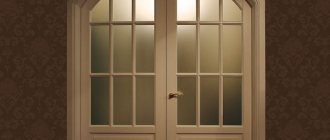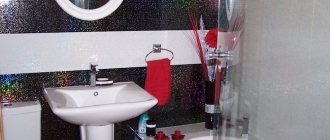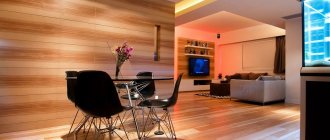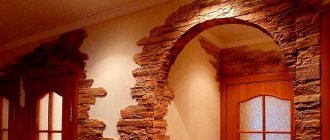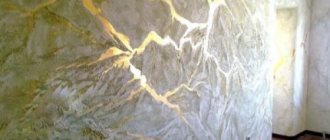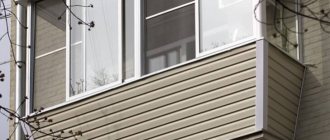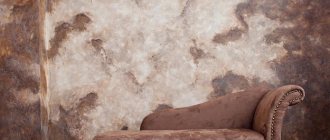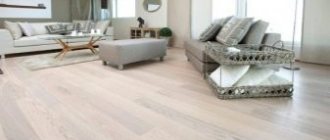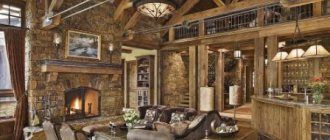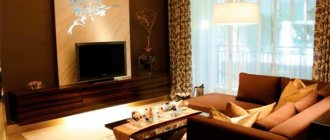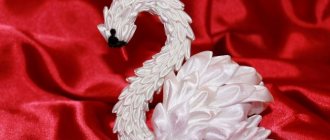Often, renovations in an apartment or house also affect the hallway. You cannot ignore such an element as the entrance door group. The stores offer a variety of materials for decorating the inside of the front door with your own hands. Common options are covering the interior with laminate, PVC and fiberboard panels or decorative stone. We will dwell on the features, advantages and disadvantages of each finishing option in detail.
Features of the interior decoration of the entrance door
The main requirements for an entrance door are: reliability, strength and beautiful appearance. The door does not have to look expensive - its combination with the interior design of the home is much more important. From the outside, its appearance speaks volumes about its owners, so it must be attractive. If the surface faces the street, it must be resistant to ultraviolet radiation, wind, precipitation, and temperature changes.
The interior coating should also not only be beautiful, but also provide the necessary thermal insulation. The finishing is selected in such a way that it matches the interior. Sound insulation directly depends on the material, but it is desirable that the coating is not very expensive.
Practical recommendations on how to decorate your front door with your own hands
The entrance leaves the first impression of the owner of the room. Decorative finishing increases the performance characteristics of the canvas. Many finishing materials increase the level of thermal protection and sound insulation. This article describes in detail the type of decoration of the front door and gives characteristics of the material. There are also options for finishing door slopes for a more aesthetic design option.
How to finish a door
The front door can be made of different materials, which can be painted, upholstered or sheathed. Each method has its pros and cons. Finishing begins after installing the product along with the door frame in the opening.
Painting
The entrance door can be painted with latex, water-based or oil-based paint. The color of the painting material is selected so that it is the same as the wall decoration or contrasts with it. Before applying the paint, the surfaces are well prepared, after which the coating is applied in two layers.
The features of this finishing option are simplicity, high speed and relatively low cost of paint. No special tools are required to apply the material; you can use just one brush.
The disadvantages include the impossibility of sound and heat insulation.
Upholstery
Thick fabric, leatherette or genuine leather are suitable as upholstery material for the entrance door from the inside. Additional elements will require a special thread and carnations. Upholstery of canvas with modern leatherette looks expensive, brings warmth and comfort to the room, and protects well from noise and cold.
The most affordable material is leatherette, which is characterized not only by a low price, but also by the following advantages:
- abrasion resistance;
- durability;
- ease of care;
- wide choice of color shades.
Despite all the advantages, the material also has disadvantages:
- flammability;
- easy to damage with a sharp object;
- impossibility of high-quality restoration of the coating.
Sheathing
To ensure that the front door is finished with high quality, lining, PVC panels, and chipboard are used. Decorating the canvas with such materials has practically no disadvantages. A similar finish can be used for lining doors made of both wood and metal. As a result, good heat and sound insulation is ensured and the service life of the door is increased. Such materials have a wide variety of textures and colors to suit any interior design.
Types of finishing of metal doors
All metal doors offered for sale are usually divided into certain classes. The main ones today are: economy, business, premium and luxury doors. Of course, such a division is conditional and approximate, since the buyer often has the opportunity to independently choose the configuration and finishing of a metal door.
The decoration of the front door in combination with the door fittings used can serve as the calling card of the owner of the apartment. Such attributes become “speaking”; without further ado, the first impression of tastes and affections is formed.
Finishing of metal doors is one of the main activities, which includes the following types of finishing:
- Solid wood (oak, pine) is the most expensive finishing method. As a rule, the most reliable and expensive components are selected for such doors. These are elite class doors, where manual assembly is predominantly used;
- Painting with polymer paints - this finish is used when the design is not of decisive importance. When applying polymer paint to metal surfaces, the electrostatic spraying method is used;
- PVC film – the ability to imitate valuable wood species. The main advantages are: environmental safety, moisture resistance, versatility, high strength;
- Decorative panels painted with enamels. The main advantage of this type of finish is the ability to choose colors;
- Laminated panels are an inexpensive and acceptable finishing option when there are no serious design requirements;
- Decorative veneer panels are an economical and effective option for finishing a door with wood. The customer has the opportunity to choose milling patterns and tinting colors;
- Metallic embossed finish;
- Decorative panels with mirrors - panels are made on the basis of MDF, if necessary covered with PVC film, a mirror is installed;
- Anti-vandal plastic - a finish that offers resistance to abrasion, climatic influences, fire, water, and increased impact resistance;
- Decorative molding - giving a new look to plastic panels, painted panels, veneer panels;
- Airbrushed panels – applying an image to the outside of a metal door;
- Veneered panel panels - imitation of valuable wood species. Savings compared to natural wood;
- Patinated panels - creating a wood texture manually using a special technology. Offers unique and distinctive finishes;
- Forged elements - the use of forged grilles and overlays. Used for decorative and protective purposes.
In our company, the buyer has the opportunity to choose the most suitable finishing option for iron doors, which will correspond to his capabilities and desires.
Finish for wooden doors
Wooden interior doors are perhaps the most common. A wooden door is quite beautiful and comfortable; the wood can be painted, varnished, painted, or even left untreated.
Advantages of natural wood:
- high strength despite low volumetric mass
- low thermal conductivity
- low sound conductivity
- high frost resistance
- ease of processing
- low coefficient of linear thermal expansion
The only disadvantage of wooden doors, perhaps, is that they are sensitive to changes in humidity, and therefore require more careful maintenance.
The door does not have to be made of one board. You can make it from several boards, and in the living room the slats should be wider, and in the bedroom or bathroom you can use narrower slats. The material for a wooden door can also be varied.
The most traditional finishing material is oak. Its wood is light yellow, light pink or red-brown. Over time, it acquires a darker shade. The door made from it will be strong and solid.
Beech is also a valuable tree. Its wood has a light pink tint with a uniform texture. Therefore, it looks very soft and fits into any modern interiors. It should be noted, however, that beech is sensitive to changes in humidity.
Ash is quite often used to decorate doors. Its wood has shades of light pink to dark brown. Unlike beech, ash is a less capricious tree.
Mahogany is a collective name for several tree species. These include Californian sequoia, and Philippine meranti, and certain species of Australian eucalyptus. Still, the American mahogany tree is considered the most commonly used. Mahogany has original shades.
Cherry, walnut, and maple are valuable types of finishing wood. They have original textures and shades, so doors made from them look great and can be chosen to suit every taste.
Of the coniferous trees, pine remains the most common material for finishing interior doors. It is more accessible to the mass consumer. Pine does not react to changes in temperature and humidity, as a result of which it is a practical and reliable wood.
Painting, varnishing or veneering is also used for cladding interior doors. Doors made of natural wood are always varnished. A wide variety of varnishes can be used: shiny, matte, semi-matte. A door finished with tinted varnish, stain, etc. looks good.
Veneering is the finishing of the door leaf with veneer of the above-mentioned species. For cladding doors, veneer cut along the grain or across the grain of wood is often used. Different areas on the door surface can be made different from one another in color.
You can decorate the doors with glazing. Glazing is made in a rectangular shape or any other, in the upper or lower parts of the door. At the same time, no law states that glass must be transparent or frosted; colored or smoky glass can also be installed.
The glass for inserting into the door is transparent, or tinted, or with a pattern, that is, faceted, uneven. Cut glass can also be either transparent or frosted. This will depend on where the door is located. If it is between the bedroom and the hallway, dark frosted uneven glass will look better. You can also place plain or uneven glass between the kitchen and another room; tinting or frosting is not at all necessary. The door leading to the hall or living room looks good with tinted glass, and it is better to install simple glass. But frosted glass will also look quite original.
There are absolutely no restrictions on the color of the glass - it all depends on your imagination. However, if we talk about Euro-style, then a door with darker glass can lead into the bedroom, and a transparent model is suitable for the kitchen. The glass of the doors to the hall and living room can have lighter shades, reaching light coffee or even milky. In this case we mean frosted glass. As for tinted glass, walnut or buckwheat shades are in fashion. Although blue tinting is used, it can look quite eccentric.
Finish for plastic doors
Natural wood is, of course, beautiful, but... not everyone can afford it. An alternative can be plastic and laminated doors. Plastic doors are easy to care for. They retain their original appearance for a long time. In addition, plastic doors are now manufactured in a wide variety of colors and shades, ideal for the most daring design solutions.
Also, a variety of colors are achieved through lamination. Without further ado, we take the existing door and cover it with PVC film of any color. As they say, cheap and cheerful. Laminated interior doors have a number of advantages. Their cost is lower due to the use of artificial materials that are less sensitive to fluctuations in moisture and temperature. In addition, the laminate does not deform over time, because it is resistant to mechanical damage (scratches and chips). Laminate flooring is easy to clean with detergents that do not damage the surface.
Another way of decorative finishing of plastic doors is the use of acrylic varnish, as a result of which we obtain a matte surface that is pleasant both to the touch and to look at. Varnishing allows you to get a wide variety of shades, including non-standard ones
